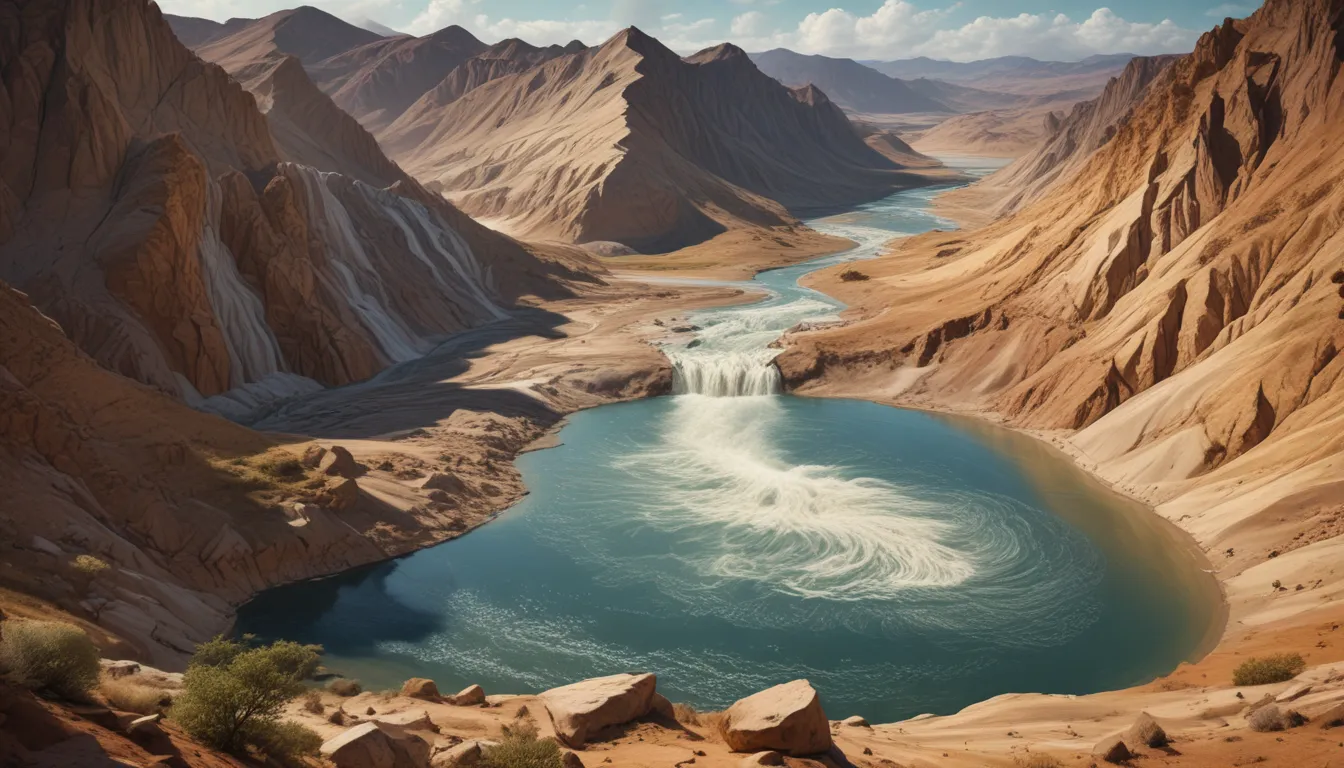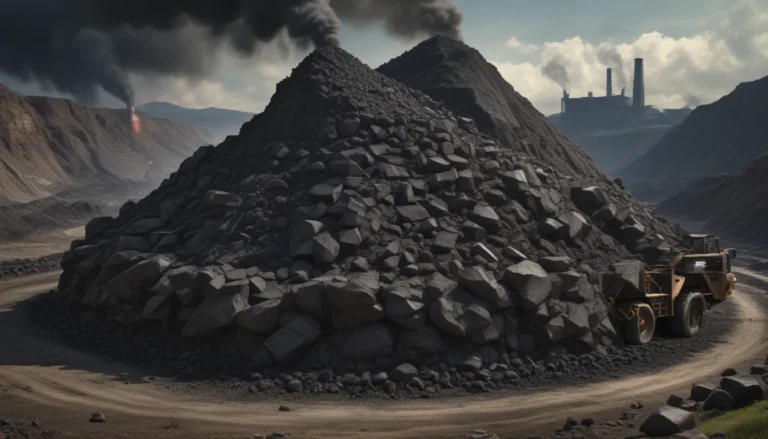A Note About Images: The images used in our articles are for illustration purposes only and may not exactly match the content. They are meant to engage readers, but the text should be relied upon for accurate information.
Alluvial fans are stunning geological formations that grace various regions across the globe. These fan-shaped landforms are the result of sediment deposition by flowing water, typically in arid or semi-arid areas. While they may appear as mere features on the Earth’s surface, alluvial fans hold surprising and captivating secrets that many may not be aware of.
In this article, we will delve into nine surprising facts about alluvial fans, shedding light on their formation, characteristics, and significance. From their essential role in water management to the impact they have on ecosystems, these facts will broaden your understanding and appreciation for the beauty and complexity of alluvial fans.
Key Takeaways:
- Alluvial fans are fan-shaped deposits formed by flowing water and sediment, primarily found in dry regions, supporting diverse ecosystems, and holding historical significance for human settlements. They vary in size and can be hazardous due to flash floods, while also containing valuable resources like gold and silver.
- Alluvial fans are vital geological features that play a crucial role in shaping the landscape, providing insights into erosion, sedimentation, past climate conditions, and river dynamics. These formations support unique ecosystems adapted to arid conditions.
The Formation of Alluvial Fans
Alluvial fans are the result of a fascinating process where flowing water transports sediment down a slope, losing energy, and allowing the sediment to settle and accumulate in a fan-shaped deposit. This phenomenon is commonly observed in regions where mountainous terrain meets a flat plain or valley, creating these distinctive landforms.
The Variability in Size of Alluvial Fans
Alluvial fans exhibit a wide range of sizes, from small, localized features to massive formations that span several kilometers. The size of an alluvial fan is influenced by factors such as the volume of water and sediment, the slope of the terrain, and the duration of the flowing water, demonstrating the dynamic nature of these formations.
Alluvial Fans in Arid and Semi-Arid Regions
These geological wonders are predominantly found in arid and semi-arid climates characterized by sporadic and intense rainfall. The occurrence of flash floods in these regions results in the transportation of significant amounts of sediment, which is then deposited as alluvial fans, highlighting their importance in these unique environments.
The Geological Significance of Alluvial Fans
Alluvial fans are not just beautiful natural formations but also hold significant geological importance. They play a vital role in shaping the landscape and are instrumental in understanding the history and processes of erosion and sedimentation. By examining alluvial fans, researchers can gain valuable insights into past climate conditions and the dynamics of river systems.
The Unique Ecosystems Supported by Alluvial Fans
The fertile soil created by the sediment deposits of alluvial fans serves as a foundation for diverse plant and animal life. These ecosystems are adapted to the harsh arid conditions found on alluvial fans and often host specialized species that thrive in these challenging environments, showcasing nature’s resilience and adaptability.
Valuable Resources Found in Alluvial Fans
One surprising aspect of alluvial fans is their potential to contain valuable minerals such as gold, silver, and other precious metals. These resources are often concentrated in the sediment through erosion and deposition processes, highlighting the economic significance of alluvial fans as geological features rich in resources.
Hazards Posed by Alluvial Fans
Despite their natural beauty, alluvial fans can pose significant risks due to the rapid and unpredictable nature of flash floods associated with these formations. It is crucial for individuals and communities residing in these areas to be aware of the potential dangers and take necessary precautions to minimize risks and ensure safety.
Evolution and Change of Alluvial Fans
The dynamic interplay of water and sediment flow continuously shapes and reshapes the morphology of alluvial fans, leading to ever-changing patterns and features. Erosion and deposition processes contribute to the evolution of these landforms over time, highlighting the constant adaptation and transformation of alluvial fans in response to natural forces.
Historical Significance of Alluvial Fans
Throughout history, alluvial fans have played a pivotal role in human settlements, providing fertile land for agriculture and facilitating the development of civilizations. Many ancient cultures thrived along rivers and on alluvial fan plains, attesting to the enduring significance of these formations in shaping human history and supporting communities.
Unveiling the Enigma of Alluvial Fans
Exploring the realm of alluvial fans unveils a mesmerizing tapestry of natural processes and enchanting landscapes. These distinctive geological formations have captivated scientists and nature enthusiasts alike, offering glimpses into the majesty and intricacies of the natural world. From their origins in mountainous regions to the vibrant ecosystems they sustain, alluvial fans serve as essential elements in the canvas of Earth’s evolution.
Understanding the surprising facts about alluvial fans not only enriches our knowledge of the Earth’s dynamic processes but also underscores the interconnectedness of various geological phenomena. Whether contemplating the formation of deltas, the role of rivers, or the influence of human activities, each facet reveals a new layer of understanding and admiration for these awe-inspiring features.
Next time you encounter an alluvial fan, take a moment to marvel at its creation and reflect on the wonders of our planet’s geological legacy.
FAQs
Q: What is an alluvial fan?
A: An alluvial fan is a fan-shaped deposit of sediment that forms at the base of mountains or hills, created by the accumulation of eroded material transported by rivers or streams.
Q: How are alluvial fans formed?
A: Alluvial fans are formed when fast-flowing streams carrying sediment abruptly enter a low-gradient plain, causing the sediment to be deposited in a fan-shaped accumulation due to the decrease in stream velocity.
Q: What are some examples of famous alluvial fans?
A: Notable examples of alluvial fans include the Bajadas del Cerro de las Ollas in Argentina, the Panamint Valley in California, and the Bighorn Basin in Wyoming, USA, showcasing the diverse characteristics of these geological formations.
Q: Why are alluvial fans important?
A: Alluvial fans are crucial for providing fertile soil for agriculture, serving as water catchment areas, and aiding in flood mitigation by acting as natural reservoirs for excess water, emphasizing their multifaceted significance.
Q: Are alluvial fans prone to natural hazards?
A: Yes, alluvial fans can be susceptible to natural hazards such as flash floods, landslides, and debris flows due to the loose sediment present on these formations, highlighting the need for vigilance and preparedness in these areas.
Q: Can alluvial fans support plant and animal life?
A: Indeed, alluvial fans often sustain diverse ecosystems characterized by abundant plant and animal species due to the fertile soil and water availability, showcasing the resilience and adaptability of life in arid environments.
Q: How do humans interact with alluvial fans?
A: Human interactions with alluvial fans encompass activities such as agriculture, urban development, and recreational pursuits, underscoring the importance of responsible management to preserve the natural integrity of these formations and mitigate risks.
Q: Can alluvial fans change over time?
A: Yes, alluvial fans are dynamic features that undergo changes over time as a result of erosion, deposition, and climate variations, leading to shifts in size and morphology influenced by both natural processes and human interventions.
Q: Can alluvial fans be found in different parts of the world?
A: Alluvial fans are a globally distributed phenomenon, contingent upon the presence of mountainous regions and suitable geological conditions, making them prevalent features in arid and semi-arid environments worldwide.
Alluvial fans stand as captivating relics of Earth’s dynamic evolution, showcasing the intricate interplay of water, sediment, and natural forces in shaping our planet’s landscapes. Unraveling the mysteries of these remarkable formations not only kindles a sense of wonder but also underscores the profound interconnectedness between geological processes and the rich tapestry of life on Earth. Join us in exploring the enchanting realm of alluvial fans and embarking on a journey of discovery and appreciation for the hidden gems scattered across our planet’s diverse terrains.






